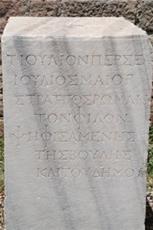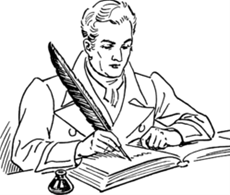Microsoft in Education Global Forum, Dubai, 2...
0 comments
 0
0 
Cursive developed as a response to the foibles of feathers. About 400 years ago, our forbears in the western world began to fill quills -- the central spine of a bird's feather -- with ink, and then to hold the quill in their hand and spread the ink onto parchment or paper. At first, they tried to make their letters look like those in books, separated from each other. They wrote one letter, then lifted up the feather to write the next. But this caused the ink to blot, and often cracked the end of the quill.
So they slowly changed the way they wrote to accommodate the shortcomings of feather technology. They kept the quill pressed to the paper so the ink would not blot, thus spreading a continuous line of ink on the paper. The letters ended up connected to one another. This style was much harder to read, but then, few people could read or write anyway, so it wasn't a big deal. As Marshall McLuhan observed, "We shape our tools, then afterwards our tools shape us."

If you want to pass 5th grade in North Carolina, you will need to master this same skill, though without the goose feathers. Not an easy skill to master.
The far-seeing legislators in North Carolina justify this requirement by pointing out that cursive writing is a tried and true element of the basic skills. They looked far back in history to see a time when cursive writing had some utility in the workforce. If they keep their eyes open, they'll see that in those same golden years riding a horse was also a useful skill. Perhaps they'll pass a law to add horsemanship to the driver's education curriculum.
Horsefeathers!
How does cursive writing fit with your concept of the skills needed for the modern workforce? How many hours of practice will it take for every fifth grader to master this skill? What shall we delete com the curriculum in order to accommodate this new requirement?